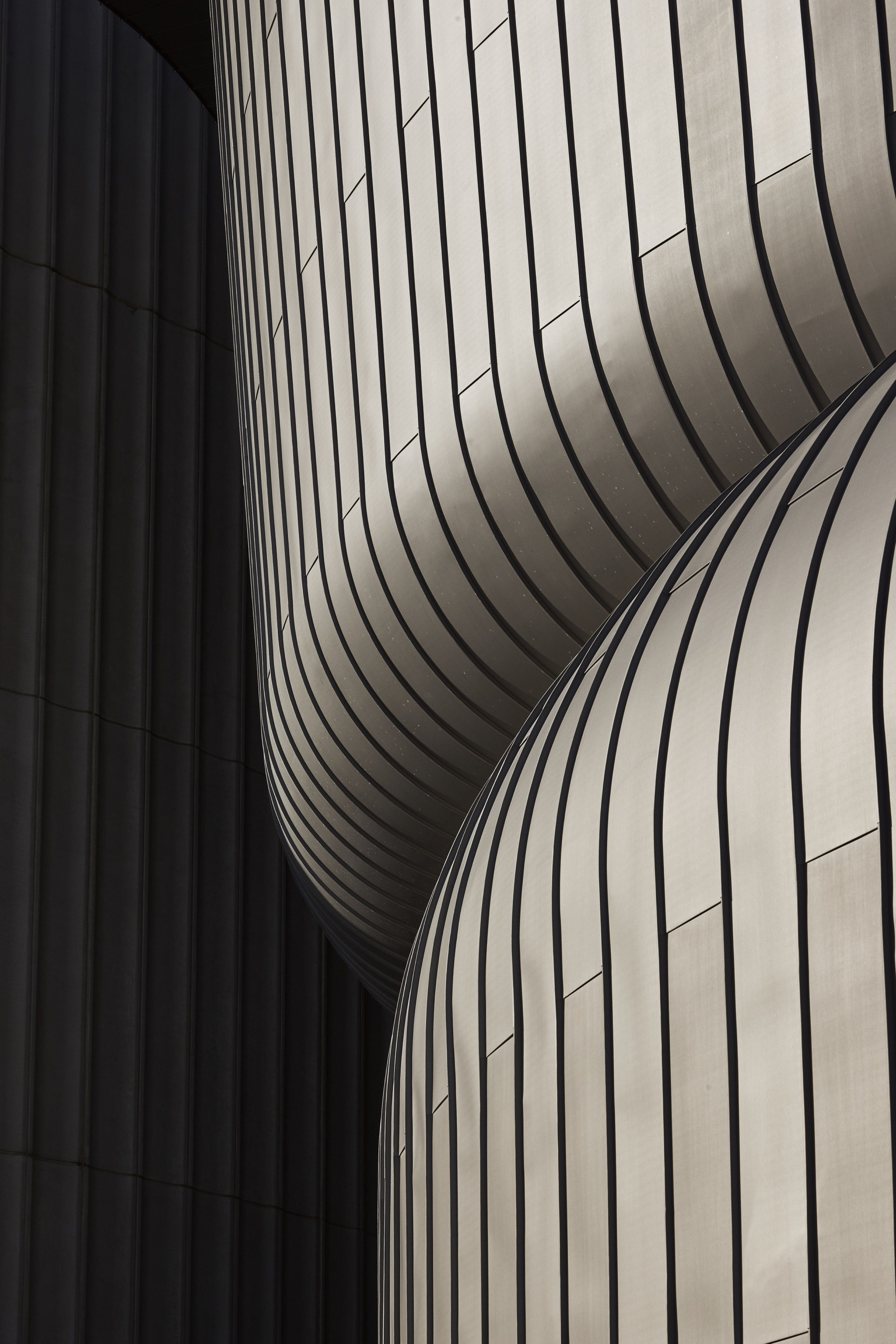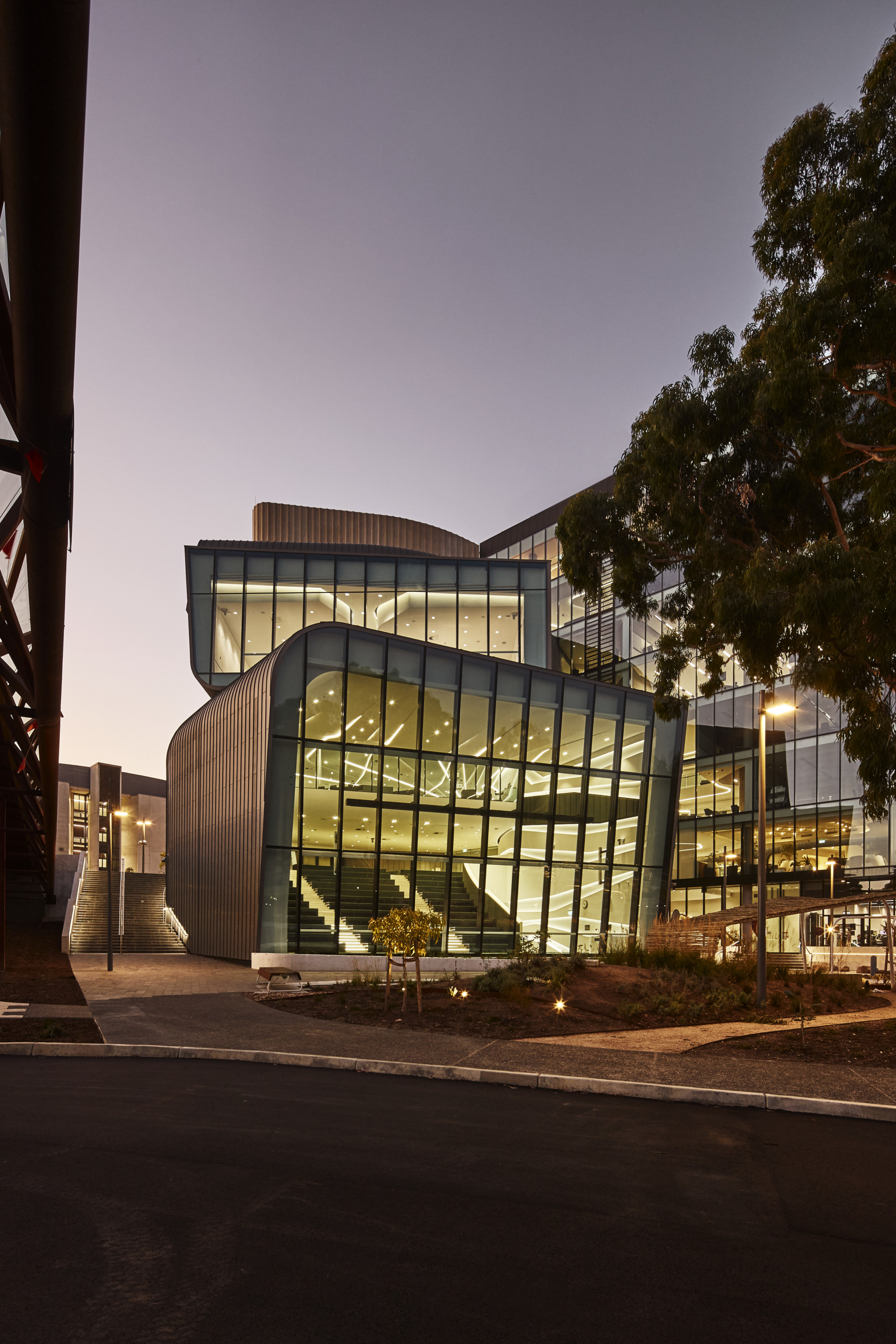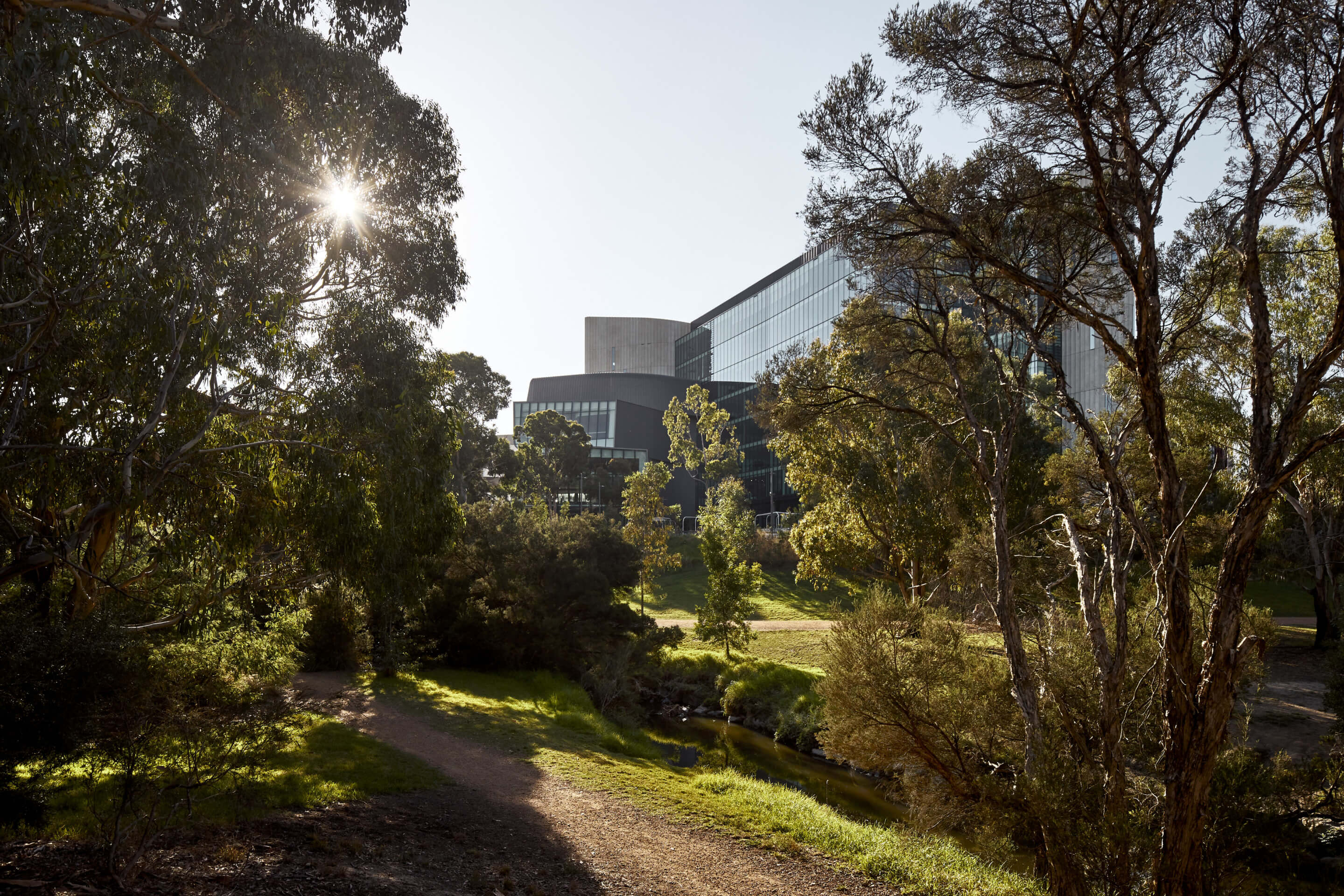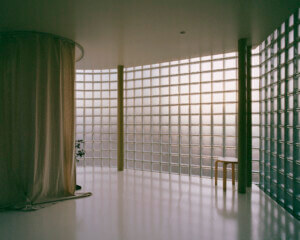- Architect
Woods Bagot - Contractor
Watpac - Sub-Contractor
Industry Cladding & Roofing - Zinc Supplier
VMZINC
- Curtain Wall
Minesco - Location
Melbourne, Australia - Completion Date
July 2020
The Deakin University Melbourne Burwood Campus has added an architectural asset to its campus that challenges the paradigm of learning environments. The Deakin Law Building by Woods Bagot is a series of sinuous and rectilinear forms that include five levels of learning spaces, technology bars, group pods, individual study spaces, and areas dedicated to student support and health and wellness. The varying forms rely upon a mix of materials to achieve the programmatic needs within.
A fluted concrete tower projects skyward on the western side of the building to provide a much-needed solar buffer for the remainder. Housed within the tower are the utilitarian elements of the building, including stairs, cores, and restrooms. The non-orthogonal form created curve radii in the massing that ranged from 78.8 inches to 623 inches, which the architects were able to negotiate using only three standard panel sizes. Slender pieces of opaque glass break up the heavy facade and allow light to filter into the interior.

Adjacent to this monolithic mass lies a curling, zinc-clad form that snakes in three directions. Each culminates in a large expanse of glazing to maximize views out to the landscape. The dark gray zinc panels tie into the aesthetic of the neighboring concrete and molded well to the complex serpentine forms. The 7,000 zinc panels clading the curving facade were supplied and manufactured by Industry Cladding & Roofing. This number of uniquely curved panels required 50 tons of zinc flat coil to be cut to size and shaped on-site. Many panels required individual bending by hand in order to ensure that a proper standing seam was achieved via meticulous tapering.

The connection of this form to the final, linear element of the project created the greatest facade challenge and required several workshops between the contractor, curtain-wall consultant, cladding manufacturer, and architects. Through rigorous detailing, the team was able to connect the informal learning spaces housed within the sinuous volume to the more traditional classroom areas within the orthogonal, glazed element. The glazing here creates programmatic transparency, affording a visual connection to the neighboring Gardiners Creek.

The Deakin Law Building employs a strategy of unique forms, programs, and materials to deliver an educational facility that breaks away from the traditional notion of the classroom. Woods Bagot principal Sarah Ball described the project as “intentionally non-institutional—it exists in a space between civic and education design. Each space addresses a different emerging methodology of teaching, doing away with the traditional lecture theatre in the process.” In a time where getting students back on to campus is no small feat, the Deakin Law Building provides an alluring reason to head back to the in-person classroom.











